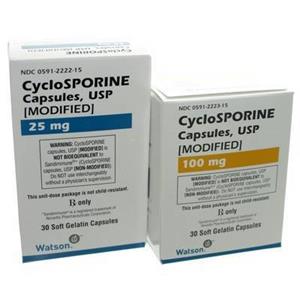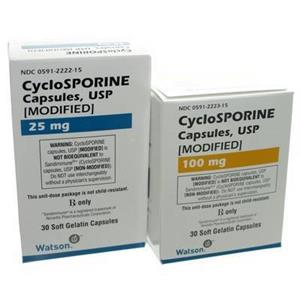Free Delivery on $50+* || Clinic Website
Providing Quality & Trust
Cyclosporine Capsules- modified
Watson
$1.02 - $4.02
$1.02 Each
Detailed Description
While cyclosporine for dogs is primarily used to treat atopic dermatitis, it can also be prescribed for a variety of other conditions caused by an immune system response.
The drug can also treat several immune mediated disorders, such as hemolytic anemia, perineal fistula, and keratoconjunctivitis sicca, and vets sometimes prescribe it after kidney or bone-marrow transplants to prevent the immune system from rejecting the new tissue.
Cyclosporine can provide an alternative to certain steroids, which have some troublesome side effects, especially with long-term use. In terms of effectiveness, cyclosporine helps about 70 percent of allergic dogs, and about half see a reduction in skin lesions and itching.
The drug also treats asthma in felines, though it does not do the same for dogs.
You must ask your veterinarian for the proper dosage for your individual dog. The following are simply averages that may not suit every dog’s needs.
The usual dosage of cyclosporine for dogs is 1.5 to 3 mg per pound of body weight given twice a day at first. Then, vets usually taper this off after about 30 days to a minimum dose that will still effectively prevent symptoms.
Cyclosporine is available in 10 mg, 25 mg, 50 mg, and 100 mg capsules. The capsules have an odor when the package is opened, and this is normal. The medication should be given orally with plenty of water at least two hours before or after eating.
You should not give Cyclosporine to dogs who are under four pounds in weight or younger than six months in age.
Tell your vet about any other medications your dog is taking, as they may interact poorly with cyclosporine. Also, let your vet know about any other medical conditions your dog suffers from, especially liver disease, cancer, high blood pressure, kidney disease, or infections, as these may be worsened by cyclosporine.
As with almost all medications, there is a risk of allergic reaction that can lead to anaphylaxis, a potentially life-threatening condition. If you see the signs of an allergic reaction, including swelling, hives, difficulty breathing, or other symptoms, contact your vet immediately.

Powered by nopCommerce
This site is running in live payment mode. Real payments will be processed.

